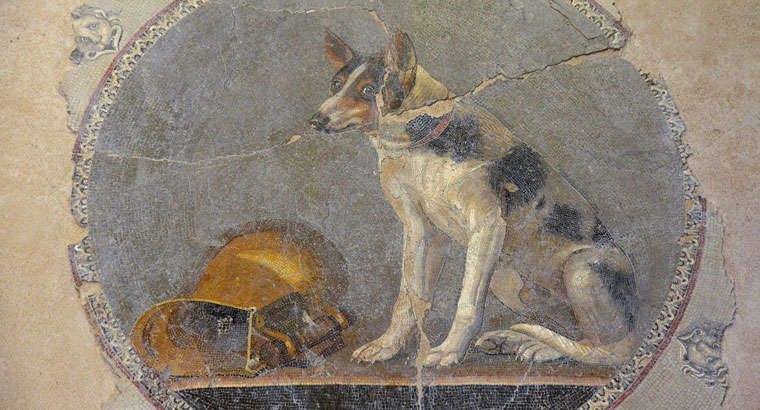The relationship between humans and pets dates back centuries, indeed millennia. Anthropology, archaeology and history have analysed this relationship in many ways through material and written evidence, all converging towards a picture of close and harmonious coexistence, without the exploitative dynamics that have increasingly characterised our evolution.
In archaeology, the practice of burying a pet in its own tomb or in the same funerary space -be it a simple pit in the ground or a monumental structure housing the whole family- is well-known and quite long-lived, documented in various historical phases. We include cases of dogs, donkeys, mules, horses and cattle where the burial methods and the analysis of the skeletal remains have highlighted the strong ritual character of this practice, as an expression of the desire to spend the life after the earthly one together with the animal.
The relationship with the dog, documented since prehistoric times, evolved through phases of domestication aimed at protecting the house and livestock, to the most total participation in domestic life. In many works of classical art history, the feeling of brotherhood between man and animal is represented through tender scenes of play with children or representations of purely affective relationships.
As in this nice Egyptian mosaic from the 2nd century BC, where the dog is “photographed” a moment after having knocked over a jug, waiting for his human to reproach him.
The works of many modern authors trace a path from the affirmation of the immortality of animals to the acknowledgement of real animal rights.
Nevertheless, it has taken centuries of intellectual querelles, scientific observations and religious beliefs to consider animals as living beings like humans, at least on paper.
It is only in recent years that a number of European countries (Germany, Spain, Italy) have issued amendments and laws protecting pets as full members of our families and therefore in the right to be well cared for and protected by their humans.
There is still a lot to be done from a cultural point of view, but we are confident of a change that can only do us good, as it takes us back to our origins
– – –
Bibliography
F. SANTINI, L’amore tra uomo e animali: tre casi studio di sepolture di animali tra rito e culto nella provincia di Rieti, Antropologia e archeologia dell’amore, IV Incontro di studi di Archeologia e Antropologia a confronto, Roma.
A. MASSARO, Dall’anima degli animali ai diritti animali, in Lo Sguardo – rivista di filosofia N. 18, 2015 (II) – Confini animali dell’anima umana. Perspectives and issues.

